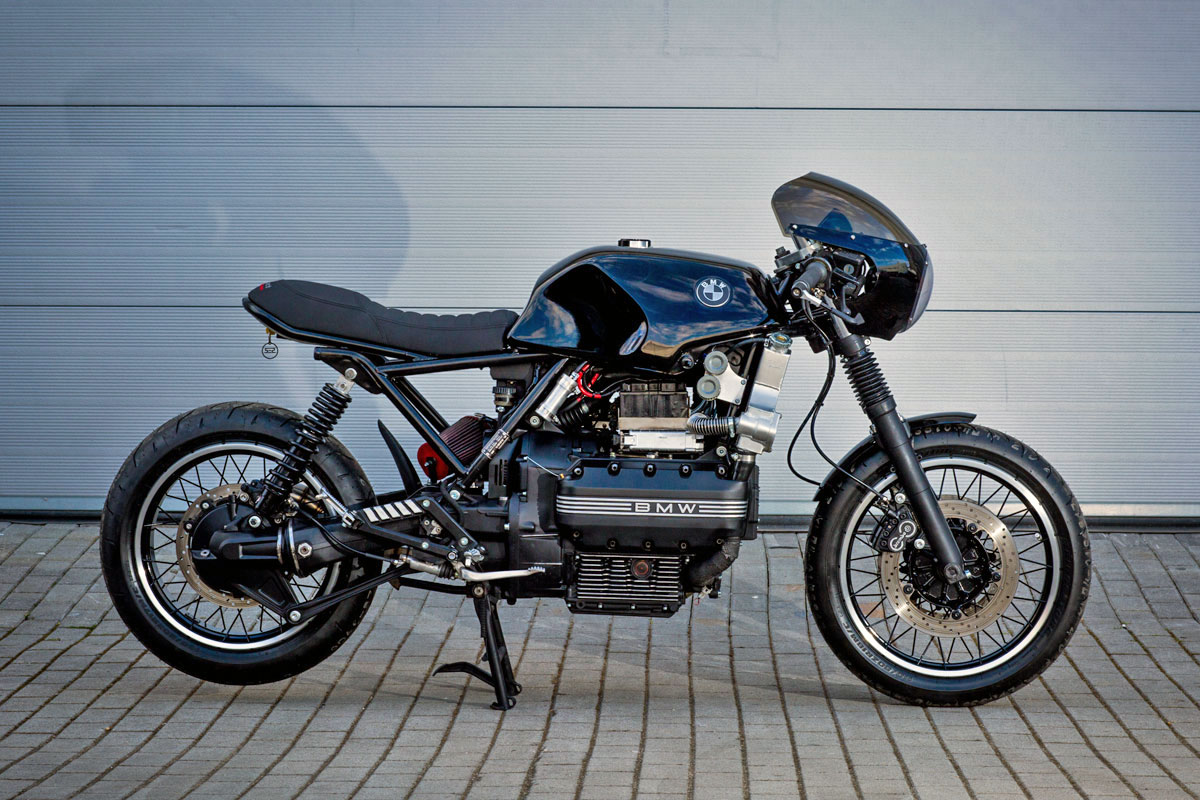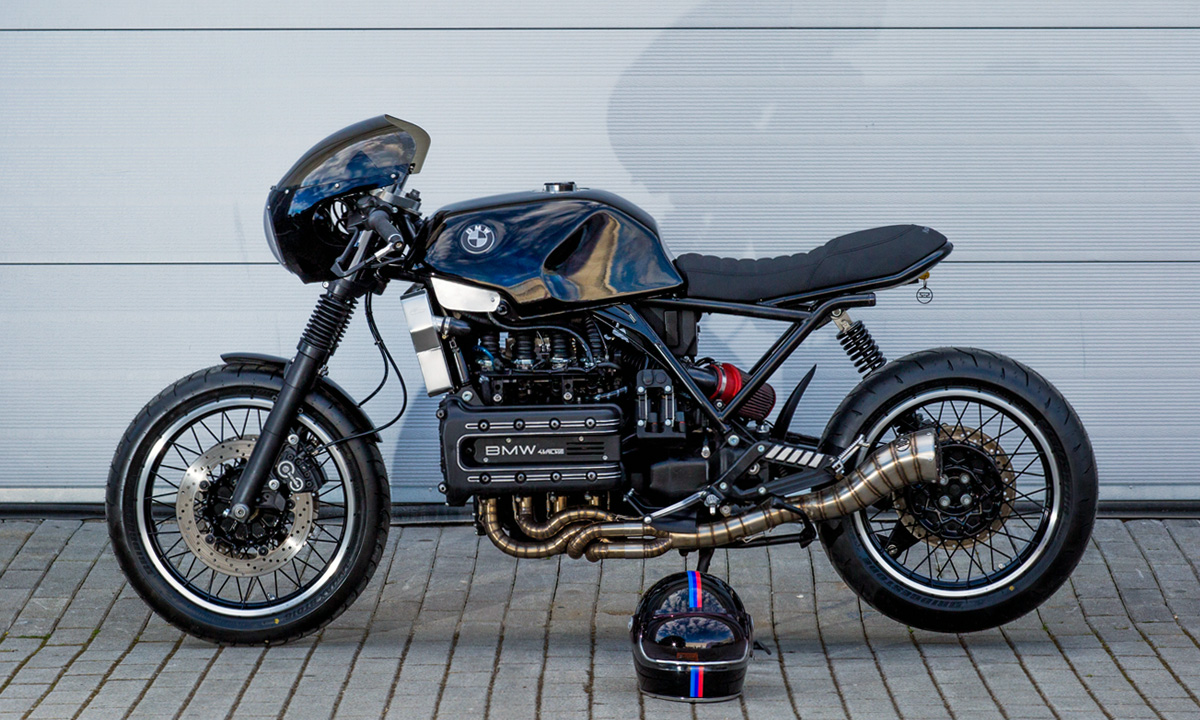When a builder chooses to convert a tourer into a cafe racer it’s always a bit of a surprise to me. Such bikes tend to be on the heavier end of the spectrum and although the BMW K1100 RS weighed in less than its predecessor, the LT, it was still a hefty 268kg. Getting that weight down as low as possible is, of course, the main goal with any such build and it was no different for ex-racer and custom bike builder Giorgio de Angelis.
First here’s a bit of K1100 RS history… If you were planning on doing any touring in the early nineties and had a soft spot for German engineering the BMW K1100 RS had you covered. The fully faired tourer may not have offered the power of some of its competition from the east, but it was considered bulletproof. The BMW K1100 RS finned bodywork was said to have been inspired by Ferarri’s Testarossa and it even came in a bright red paint scheme just like the Italian.
You may recognise this heavily customised BMW K1100 RS as the work of Giorgio de Angelis. His last build was a huge hit appearing on pretty much every custom motorcycle site you can think of. That project was based on a BMW K1100 LT, the heavier model in the series, and ended up a track-ready ride. So putting these portly Beemers on a diet was nothing new to Angelis. This time around his goal was a little different though. For this build, his aim was to create a road-ready BMW K1100 cafe racer that boasted equal parts of style and performance.
Converting the tourer to a naked cafe racer started with the obvious removal of bodywork. Everything except the fuel tank was discarded and all mounting gear was trimmed from the frame. BMW used aluminium when creating the fuel tanks for these models which offers huge weight benefits. Giorgio also happens to like the lines of the stock tank so he kept it and continued the use of aluminium throughout the rest of the build. The most notable alloy addition is the RC Racing radiator occupying the front end of the engine.
Work on the frame continued with a complete overhaul of the rear section. After cutting away tail supports Giorgio wanted to fit a seat that could still accommodate a passenger. Fitting a flat saddle would give the bike more of a Scrambler aesthetic so he took the harder route. His revised loop levels out the bikes bone line and features a sportier kick at the rear. The cavity beneath the seat was then utilised for storing the bikes electrics. Rather than going for a completely naked aesthetic Georgio installed a vintage styled viper fairing. Inside the cockpit, you’ll find a single Acewell speedo, custom alloy top clamp and clip-on handlebars.
With the bike weighing a fraction of its former self, Giorgio invested time into improving performance. The K1100 forks have been suitably rebuilt and the mono-shock swapped for an updated version. In place of the bulky airbox is a breather system that uses lightweight corrugated pipework. A large K&N cone filter positioned above the swingarm feeds each carb via the 1-into-4 system. A custom fender keeps water off the filter and a similarly styled fender floats over the front wheel. Speaking of wheels, BMW’s hefty 3 spoked eyesores are nowhere to be seen. In their place are more suitably styled spoked rims wrapped in grippy Bridgestone rubber.
The last and perhaps most striking modification on Georgio’s BMW cafe racer was to the bike’s exhaust. The snaking 4-into-1 system is the work of Ses Factory and is easily the icing on the Stollen. BMW Bricks have never been my thing, but Georgio’s work is starting to convince me otherwise.
Photography by Giovanni De Angelis













